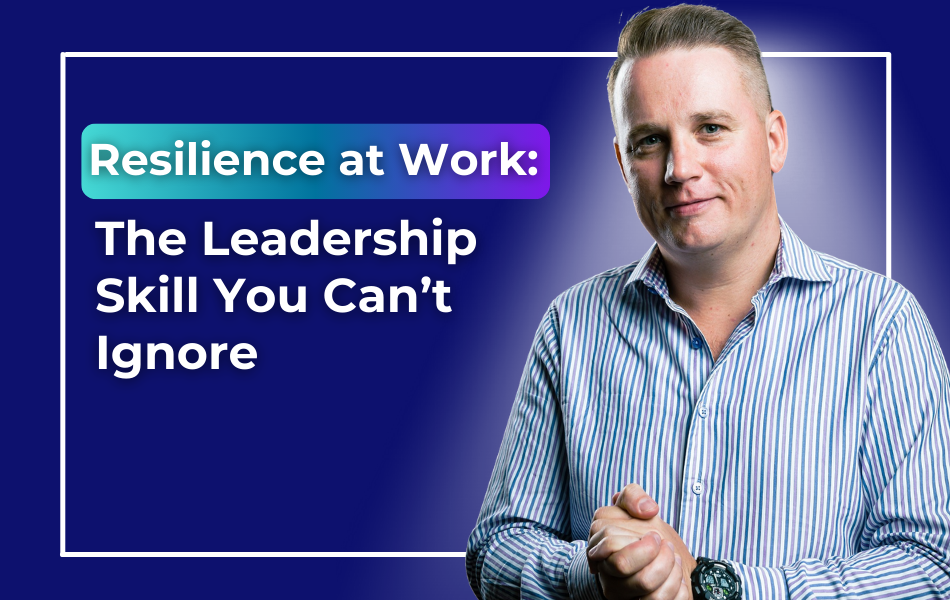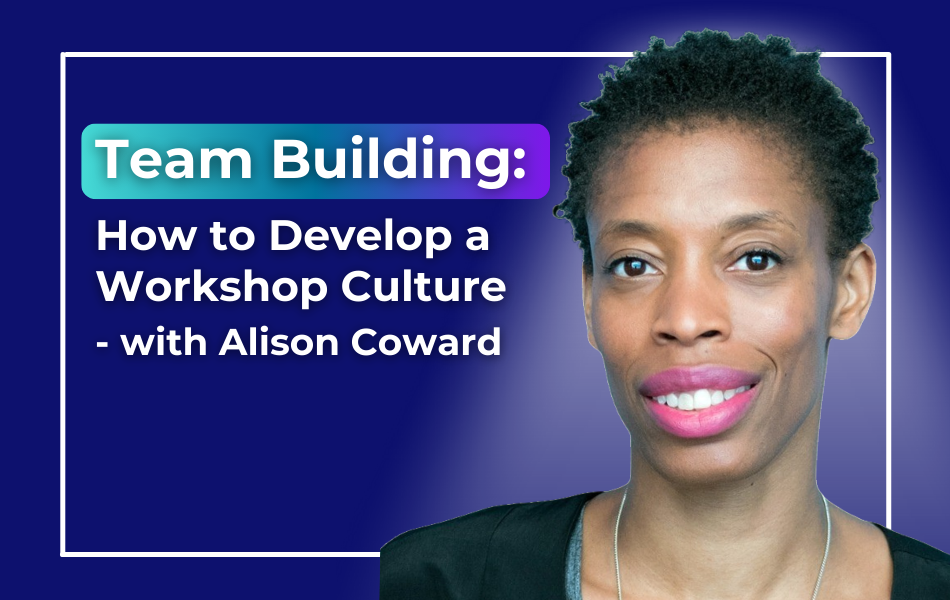
232. How to Lead Your Team Through Uncertainty and Change
About this Podcast
Ep. 232 – Change is hard, but leaders can make it easier.
In this episode, Ramona Shaw explains why our brains resist change and shares practical ways for leaders to help their teams adapt. Learn how to communicate effectively during transitions, track progress, and keep your team motivated when things shift.
This episode is a must-listen for any leader managing change or preparing for future transitions. Whether you’re dealing with small team adjustments or major organizational changes, understanding how brains work during change will better equip you to guide your team through transitions successfully.
Watch it on YouTube HERE.
Episode 232 Transcript:
0:00:00 Ramona Shaw: This is episode 232 and we’re going to talk about all things change and how you as a leader need to prepare for change and guide your team during phases of change. Be this technological change, organizational change, team change, or changes with your work and responsibilities and projects at hand. This is a topic that affects every single leader in an organization. I hope this episode will shed some light on how to do this well. Here are the two questions this podcast answers.
0:00:31 Ramona Shaw: One, how do you successfully transition into your first official leadership role? And two, how do you keep climbing that leadership ladder and continuously get promoted? Although the competition and the expectations get bigger, this show, The Manager Track podcast will provide the answers. I’m your host Ramona Shaw. I’m on a mission to create workplaces where work is seen as a source of contribution, connection, and personal fulfillment. And this transition starts with developing a new generation of leaders who know how to lead so everyone wins and grows.
0:01:03 Ramona Shaw: In the show, you’ll learn how to think, communicate, and act as confident and competent leader you know you can be welcome to The Manager Track podcast. It’s great to have you here. So, as I said in the introduction, we’re going to talk about change and managing and navigating change is something that affects all of us. Some of us do this really well and results show. And some leaders go into a phase of change without really having a plan. They might have a plan and a roadmap on how to execute the change tactically, but the vast majority about successful change implementation is about the people.
0:01:40 Ramona Shaw: In fact, the Boston Consulting Group refers to this as the 80 2010 rule. 10% is about the effort, the initiative, 20% is about the technology that goes along with the change, and 70% of the success is determined by the people. If you are in a leadership role, this means that 70% allocation is really in your hands. You can either make this successful through your guidance and influence, or you can diminish the probability based on your lack of a preparation or understanding of what change means, especially for people who have to go through the change process.
0:02:18 Ramona Shaw: So that’s what we’re going to talk about today. I do teachings on this and hold workshops on it, and we’ll dive way deeper into it to better understand the change processes. But I want to highlight a few key points here on the podcast that hopefully will help you as you think about the changes that are currently going on. And speaking of that, think about something currently happening for you in your role where you’re navigating a change so that whatever I’m sharing here today becomes really practical. But let’s start with an analogy. Imagine you’re leading a whitewater rafting expedition down a pretty wild river, and your team is looking for your guidance.
0:02:56 Ramona Shaw: That is what leading organizational change can feel like. Just like a skilled river guide learns to navigate those treacherous waters, you can also learn to steer your team through those turbulent waters and make sure you’re somewhat kind in that river and going through the water, and you’re not hitting the rocks on the side or the little things that pop up in front of you. We’re going to talk about some insights from neuroscience that will help you as you approach change management.
0:03:26 Ramona Shaw: We’ll specifically be drawing on the work of Doctor Brit Andreotta, an internationally recognized thought leader in brain science based solutions for workplace challenges. So you’ve probably heard this statistic. It’s pretty sobering. 50% to 70% of change initiatives failed. That’s more than half of the initiatives that come with organizational change don’t achieve their goals and objectives. So the question is, why is change so hard and what can you do about this?
0:03:57 Ramona Shaw: Whether it’s a big change initiative, such as rolling out new technology, introducing a new software, a reorg, as well as small reassignments within your team, you might move one person into a new role, or your shift responsibilities, because you have to let someone go, or someone terminate it, or you introduce a new manager to your team, or you might lead a number of managers and one of those managers being replaced.
0:04:25 Ramona Shaw: So big change and small change. Your understanding of the neuroscience of change will have a big impact. What we know from neuroscience is that humans are actually wired to resist change. In fact, our brains perceive change as a potential threat, and it can trigger our flight or fight or even freeze response. When we think about sort of our survival instincts, that even though they’re no longer useful because we don’t have to fight saber toothed tigers, they’re still wired into our brains.
0:04:59 Ramona Shaw: Back when our brains started to form, whenever we would introduce a change or a change was introduced to us, it meant new risk factors were introduced. Because what got us to stay alive, that is the past, is what is likely going to keep us alive, at least according to our brain. And change means we’re going to move that around. And with that, some risks is being introduced. So we don’t like that. We want to make sure that whatever got us here is also what’s going to continue to keep us here.
0:05:35 Ramona Shaw: So that’s the first thing that’s really important to acknowledge. But then let’s go a little bit deeper. There are four key brain structures that play a role in our response to change. First is the amygdala. The amygdala sees change as potentially dangerous and responds with fear and anxiety. It’s sort of in the back of our brain. You might have heard of amygdala hijacking that. When we really get triggered or fearful or very emotional, it almost like hijacks all other information that typically would flow through our body.
0:06:09 Ramona Shaw: And we’re now solely focused on that one threat. It’s very useful, because if suddenly a tiger jumps out of the bushes, you really don’t want to think about whether you’re hungry or your knee hurts. You don’t want to wonder where your friend is. No. What you do in that moment is you run away from that tiger. That’s like the natural instinct of before anything else. The second one is the antorinal cortex, which creates mental maps of our physical spaces and social networks, which is actually a really interesting component of our brain. So as you look around the room or wherever you are right now, your brain is picking up information about that physical space, so that if you turn around, your brain kind of remembers what it just saw and how big the room is or where you might be bumping into a wall, in terms of social networks, of how we’re connected to different people.
0:07:03 Ramona Shaw: Then there’s the basal ganglia, which turns behaviors into habits. So when you repeat a behavior over and over again, it is that aspect of the brain that will turn it into habits. And then there’s the habenula, which influences how we respond to failure when something doesn’t go well. Understanding these brain structures gives us a roadmap for managing change more effectively. And I’m going to dig deeper into each of the four, and then we’re going to talk about seven specific strategies to help you lead through change.
0:07:35 Ramona Shaw: So let’s start with the amygdala. As I said, the amygdala plays a crucial role when we process emotions, especially around fear and anxiety. So what happens during change is that the amygdala can actually get triggered when we’re assessing new situations and we perceived potential threat, and when we feel stressed because a change is introduced, we might start to have that fight or flight response.
0:08:02 Ramona Shaw: This part of the brain is going to be especially impacted when the change is pretty high stake and is introduced all at once. So let’s say if you tell someone, I’m going to have to let you go effective today. So please go back to your desk and pack your belongings. The response in that moment may be complete fear of becoming homeless and losing their livelihood and or the embarrassment or the anxiety or the anger. And that emotional response in that high stake moment may either mean I’m going to totally shut down and try to get out as soon as possible, or I’m going to fight back. But I can’t really assess, or that person can’t really assess in a rational, more logical way what’s currently going on and remain effective in the dialogue as of, okay, explain me why, what are the next steps? And, you know, what’s going to happen from here on out and so forth.
0:08:57 Ramona Shaw: The entorial cortex, and, overall, the perception of time. So, when we have these cognitive maps of our environment or social structures and connections in our minds, and then change happens, our brains need to update all of these maps, and it can be very demanding. Cognitively speaking, this can be quite demanding. If there is a reorg happening suddenly, that structure of social connections your anthorian cortex has created needs to be revised.
0:09:30 Ramona Shaw: And the bigger the change, the more revision is necessary. And so that part of the brain gets stimulated, and again, it can be draining. It can make people feel demotivated. It can make them feel tired. It can show up as confusion or being defensive because we don’t want to go through the process or don’t really want to recognize that all these maps that we’ve created about our social connections are now going to be reshaped.
0:09:56 Ramona Shaw: If you get a new boss and you’ve established these certain relationships, that new boss may have been a former peer, suddenly your brain is like, whoa. That social connection needs to be completely rewired because of the new role that. That you’re taking on. So, keeping in mind that when we change not just physical spaces, but also social connections, it is a brain activity that will follow, and that takes time and energy. The third one was the basal ganglia, which is connected to habits.
0:10:28 Ramona Shaw: Based on what we know from neuroscience, in order to create new habits, we have to consistently repeat the behavior. There are different numbers around how many times? This is according to the source that I’m citing here, but 40 to 50 times, on average, to create neural pathways. And initially, walking that new pathway, the new routine. Let’s say I’m working on one CRM, and I totally know how this works. And suddenly the company says, actually, we’re going to replace that CRM with a new tool, and I have to recreate all these behaviors and create new habits.
0:11:06 Ramona Shaw: It’s treacherous. In the beginning, it’s like walking on a path that the snow has already, you know, it’s like you’re in a. In snowy Mountains, and you walk between your house and the village, and you keep walking that path up and down every single day. After a few days, you’re starting to not walk in deep snow anymore, but a little path will form, and the more that you walk it, the easier it’ll be to walk that path between house and village.
0:11:34 Ramona Shaw: But then if we say, like, instead of going to the village to the south, now I need you to go to the village to the north, you’re going to have to stomp through, you know, deep snow, fresh snow again, which is tiring, takes more time, and you might find yourself lost at some point because you don’t really know. You don’t have a path there yet. So again, confusion might kick in, feeling lost, excited about the change and uncertainty may kick in.
0:12:02 Ramona Shaw: The more we go that path, the faster we will learn the new pathways, and the basal ganglia will help us doing so. If you think about the 40 to 50 times, the faster you get to that number, the faster you will build new habits. Instead of saying, we’re going to slowly roll this out and keep two tools in parallel for a long time, people may still revert back to the old habits, and it will take a longer time for them to get accustomed to the new tool.
0:12:31 Ramona Shaw: Sometimes it is easier to immediately switch over from one day to the next, so that the repetitions and the new tool are higher, or there’s more, the repetitions are higher, faster, and the new habits will form. And then, last but not least, we had the habanala, which influences how we respond to failure. And it’s important of creating positive experiences. During change initiatives, when something goes wrong, we experience a setback or make a mistake, and our brains will notice that this is a setback. It will associate this bad experience with the change.
0:13:08 Ramona Shaw: The more that change is associated with negative experiences, the less likely am I to want to lean into the change. So, for you, as a leader, it’s really important to recognize this and to create as many positive experiences that your teammates and you associate with that change as possible. That’s because of the habanullah. So, talking about the main components of the brain that are affected by change, now let’s talk about the seven strategies that you can use to drive successful change in your organization, specifically your team.
0:13:45 Ramona Shaw: The first strategy is to start with why. As leaders, we have to focus on the what and how of change. Like, what are we actually changing? How are we going to go about it? The crucial element that may not seem as urgent, but yet is really important is the why. Your team needs to clearly understand the purpose behind the change. It’s not just about appeasing their curiosity in the process. It really helping them understand the why will calm down their amygdala’s fear response, because now it’s seeing that this isn’t a danger. There’s like, a good reason for it.
0:14:23 Ramona Shaw: So clearly communicating why as a change, why the change is necessary and how it aligns with the organization’s vision and values, or the teams and hone that in allows your brain to code that change not as a threat, but to see it as an opportunity. You want to reiterate that change as much as possible. That reiterating brings me to point number two. Strategy number two is to over communicate. In times of change, there’s really no such thing as too much communication. Not a whole lot of leaders, if any, deal with over communication. It’s usually the opposite. But definitely during change, you want to reiterate that why, but you also want to continue to talk about what you know and what you may not know yet.
0:15:08 Ramona Shaw: If you don’t communicate, people will make up a story, but now it’s their narrative. Usually it’s a worst case scenario, and usually they’re at the center of this worst case scenario. That’s what we do with our brains. If you don’t communicate and you don’t really address individual questions, individual roles, their sort of sense in the structure or place in the structure of the change, the employee in itself, their brains will create the narrative, and it’s not going to be a good one. So you have to take the lead and emphasize, why is this happening? And share as much information as you can, be, as transparent as you can, while also addressing what you cannot share yet or what you don’t know yet. So you’re preventing them from making something up because they think that you know, but you don’t want to say.
0:15:57 Ramona Shaw: And if people trust you, this will help you a lot. The third strategy is to measure and address on a continuous basis the net effect of the change. So, because change can be biologically stressful, like we’ve just talked about, through these brain functions that are cognitively tiring, we do need some sense of, like, motivation and seeing, hey, we’re making progress and there is an end in sight. So look at how and what can you track in terms of change implementation, and then continuously look at how the progress and celebrate that process.
0:16:34 Ramona Shaw: Look at what is the gain. If you’re looking at changing into. I’m going to go back to this example of introducing a new CRM. Look at. Okay, what are the benefits of it? Who has a win of this new CRM? What’s something we can do with it that we couldn’t do before? Initially, we were only able to handle ten entries a day. Now, a week later, we’re already at 40 entries a day. Or tracking your time, I can see that you’ve gotten ten x faster in processing it. If you notice that for some reason, whatever you initially decided to track isn’t actually tracking in the right direction, it might get worse, then this would also give you some indication that you need to look at this more closely.
0:17:15 Ramona Shaw: And it may be that your hypothesis of did change was wrong, and that requires you to take a step back and question whether this change is the right one, or if you need to pivot or experiment with different approaches overall. So tracking helps you identify those things and not wait too long until it’s too late, but also helps you to identify the progress and then share that with the team. Strategy number four is about mapping out the route, just like you would if you were that whitewater rafting guide that I was mentioning in the beginning.
0:17:51 Ramona Shaw: Initially, when you go right water rafting, they tell you, here’s the river we’re going to. Here’s the starting point. This is where we’re going to get in the water. Then we’re going to go through here, then we’re going to say, like, and then it gets a little rocky. This is what’s happening here. Then we’re going to sort of take a right turn and it’s going to get really calm. Then we’re going to hit this fall.
0:18:11 Ramona Shaw: Here’s what I need you to do. Then, you know, hang, hold on tight or do XYZ. And then we’re going to reach the destination, which is right here, and we’re going to take the boats out of the water. So the guides would give you this so that you have a physical map now in your mind as you’re walking up to the starting point. The very same is true when we go through a change journey. So you really want to identify the starting point, identify the destination and the key milestones along the way, which helps to engage that internal cortex, allowing it to create these new mental maps that come out of the change.
0:18:51 Ramona Shaw: When people can visualize that journey, it becomes a lot less intimidating and seems more achievable. The fifth strategy is about recognizing effort. We already talked about recognizing progress, and I’m going to focus here on the effort in itself. If you’re dealing with change, go be this fast or slow. Change the things that happen within a day, or nouns today and the next day, things are already different, or it’s a gradual year long project.
0:19:19 Ramona Shaw: It’s really important to celebrate the effort that people put into it, not just the progress. Sometimes through change we put in the effort, we demonstrate that we’re willing to take it on, but it still is hard or we don’t see the results yet. And for you as a leader, to maintain the motivation and create these positive experiences with the change, celebrate even the effort. When you see someone was leaning into it, even though they didn’t get the result that they wanted, or someone was trying it out, that is worth a call out.
0:19:53 Ramona Shaw: Strategy six is to coordinate changes, and this really is only applicable if a large number or larger number of people are involved. And it’s not just, you know, one, two, maybe three people. Because when you have a whole team or a department or organization go through change, there are so many different aspects that are changing, and teams and people will change at a different pace. And so the, almost like the controller of change will be one who will check in on how far along are we in each of those different groups or these different change projects, create realignment and sort of give an update more broadly about where we are and what might be some hurdles or some inconsistencies or deviations of the alignment or the planned process that needs to be addressed.
0:20:40 Ramona Shaw: So having someone in place and that does not need to be you. If you’re going through a team change, you can assign someone and say, like, hey, I would like for you to check in on these different work streams or with these different peoples on how it’s going with the change process every week, every month, or every day, whatever that right cadence is, and then for us to talk about it at a certain time or for you to update the team on a regular basis, it’s a very proactive approach to make sure you’re involving people and you’re keeping your fingers on the poles.
0:21:14 Ramona Shaw: And then the last one, definitely not least, is to leverage the power of learning. Most change initiatives require people to learn a whole bunch of new behaviors or shift their habits like we talked about. And so this is where the learning and development approach really kicks in and starts to play a crucial role. Emphasize the importance of having a growth mindset, the fact that we can all learn something new and adapt new skills. We’re not limited, we’re not fixed.
0:21:44 Ramona Shaw: Our brains can learn and can adjust. And to really believe that everyone, or for you to communicate your belief that everyone on your team is capable, fully capable to adopt, and if you have additional skill training opportunities, if there are additional other ways that you can support them through the growth or development, or even maybe your organization has something that they can provide, even if it’s just a training on change and why change is difficult, that is already really valuable. One thing that I sometimes do with teams that go through change, and we have a workshop around it, is for them to fill out some personality assessment. It could be a disc assessment.
0:22:28 Ramona Shaw: And for example, in a disc assessment we see based on where you land in these four quadrants, you might have a different predisposition to change. And so we then can talk about how each of the team members perceives change. Some people are really excited about change. And you know, if you’re one of those, then your response is going to be different than the response to other people. And if we all should respond the same way, that is our way, right?
0:22:58 Ramona Shaw: That is when we get into trouble. So building awareness that change in their change response is not going to be the same for everyone. And that there are certain roles that each of us can play based on our natural predispositions, that is really useful. Leaning into that growth mindset, the learning about each other and learning new skills will be helpful. So these were the seven strategies. I want to quickly recap them. The first one was to start with the why.
0:23:27 Ramona Shaw: The second one was to over communicate. Third one was to measure and address the net effect of change. The fourth one was about mapping out the route, the journey of change. Fifth was to recognize effort, not just progress. 6th was to coordinate change or have a change controller. And number seven was to leverage the power of learning. So as we wrap up, I’m going to emphasize the importance of developing the skill to manage change. Just like a whitewater rafting guide learns the skill to be a guide. So for you to become that change guide, that is learning a new skill.
0:24:08 Ramona Shaw: It also requires teamwork, and it requires adaptability. And a huge bonus point if you have trusted relationships going through change when employees don’t trust leadership or employees don’t trust you, is a lot harder than when that trust is there. So any upfront work that you’ve done on building trusted relationships will pay off during times of change. So when you then understand the neuroscience behind change resistance and you implement those seven strategies we’ve talked talked about, you’re way better equipped to lead your team through. And my final point here is that nothing really remains unchanged. We are constantly going through change, big or small, and every change is an opportunity for growth and an opportunity to evolve as human beings or to evolve our career skills.
0:24:57 Ramona Shaw: And so adjusting your mindset to move away from thinking change is bad, to change is inevitable. And it will help me sort of like chisel the edges of my, the version of me to make me better and stronger in the future. I hope that, especially in a time where I know a lot of organizations are going through change, I hear it all the time, and I know that some of it is hard, some of it is really challenging.
0:25:24 Ramona Shaw: There are things that are outside of your control. We didn’t talk about those. We talked about the things that are within your control, which include understanding what neuroscience plays into this, why we resist change, and some of the strategies that will help you lead your team effectively. So that sort of neuroscience as we know it and the brain becomes a partner to you and not an antagonist. And with that, I hope you find some insights for yourself and feel better equipped to manage change in the future. Thank you so much for tuning in. We’ll be back in another week with a new episode of The Manager Track podcast.
0:26:00 Ramona Shaw: Bye for now. If you enjoyed this episode, then check out two other awesome resources to help you become a leader people love to work with. This includes a free masterclass on how to successfully lead as a new manager. Check it out at archova.org/masterclass the second resource is my best selling book, the confident and competent new how to quickly rise to success in your first leadership role. Check it out at archova.org/0:26:27 Ramona Shaw: books or head on over to Amazon and grab your copy. There you can find all those links in the showdown.
REFLECTION & DISCUSSION QUESTIONS
- How can I leverage my understanding of the brain’s natural resistance to change to foster a smoother transition within my team?
- Which neuroscience-based strategies can I adopt to help my team feel more supported and less resistant during periods of change?
- How can I apply the insights from this episode to better prepare for and navigate future organizational changes in a way that drives lasting success?
RESOURCES MENTIONED
- Learn how to turn your 1-on-1 meetings from time wasters, awkward moments, status updates, or non-existent into your most important and valuable meeting with your directs all week. Access the course and resources here: ramonashaw.com/11
- Have a question or topic you’d like Ramona to address on a future episode? Fill out this form to submit it for her review: https://ramonashaw.com/ama
- Check out our free masterclass on how to successfully lead as a new manager: https://archova.org/masterclass
OTHER EPISODES YOU MIGHT LIKE
- Episode 79 How to Create a Strategy for Your Team
- Episode 175 How to Best Support Your Team During a Time of Uncertainty & Change
WHAT’S NEXT?
Learn more about our leadership development programs, coaching, and workshops at archova.org.
Grab your copy of Ramona’s best-selling book ‘The Confident & Competent New Manager: How to Rapidly Rise to Success in Your First Leadership Role’: amzn.to/3TuOdcP
If this episode inspired you in some way, take a screenshot of you listening on your device and post it to your Instagram Stories, and tag me @ramona.shaw.leadership or DM me on LinkedIn at linkedin.com/in/ramona-shaw
Are you in your first manager role and don’t want to mess it up? Watch our FREE Masterclass and discover the 4 shifts to become a leader people love to work for: www.archova.org/masterclass
Don’t forget to invest time each week to increase your self-awareness, celebrate your wins, and learn from your mistakes. Your career grows only to the extent that you grow. Grab your Career Journal with leadership exercises and weekly reflections here: ramonashaw.com/shop
Love the podcast and haven’t left a review yet? All you have to do is go to ramonashaw.com/itunes and give your honest review. Thanks for your support of this show!
* Disclaimer: Shownotes may contain affiliate links. That means that I am awarded a small commission for purchases made through them, at no added cost to you.







